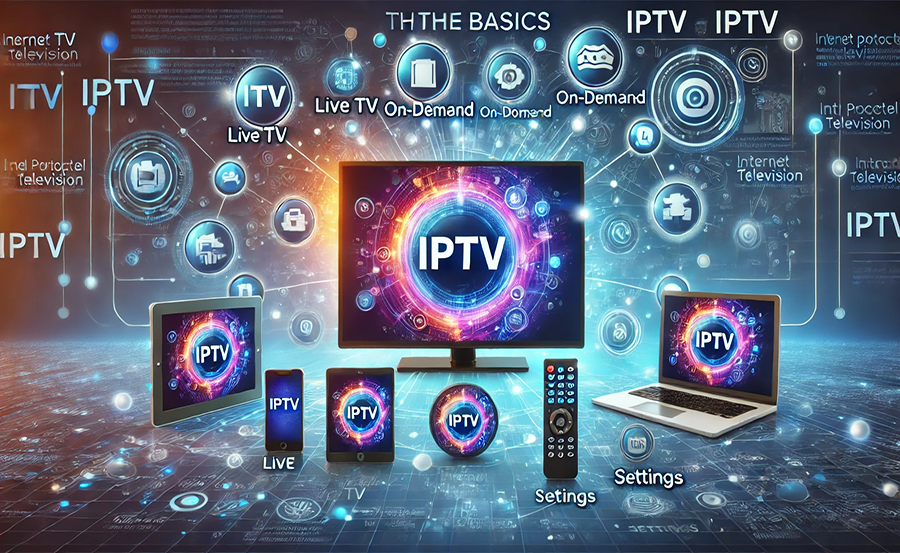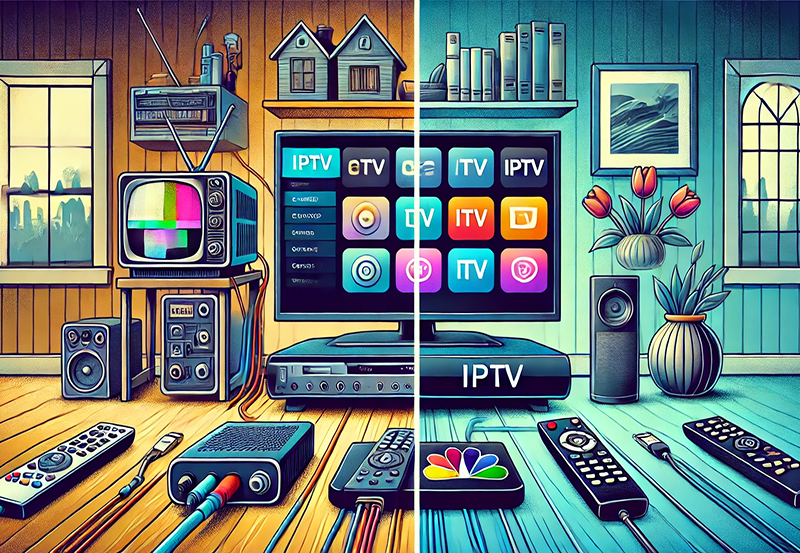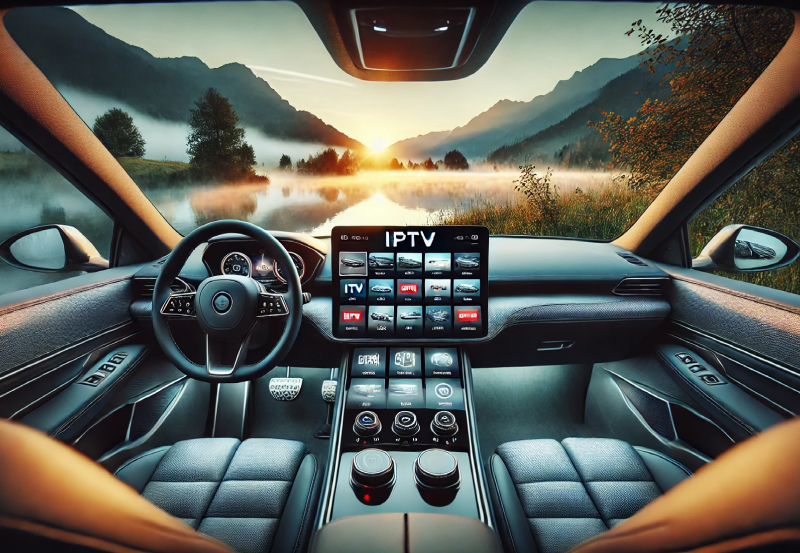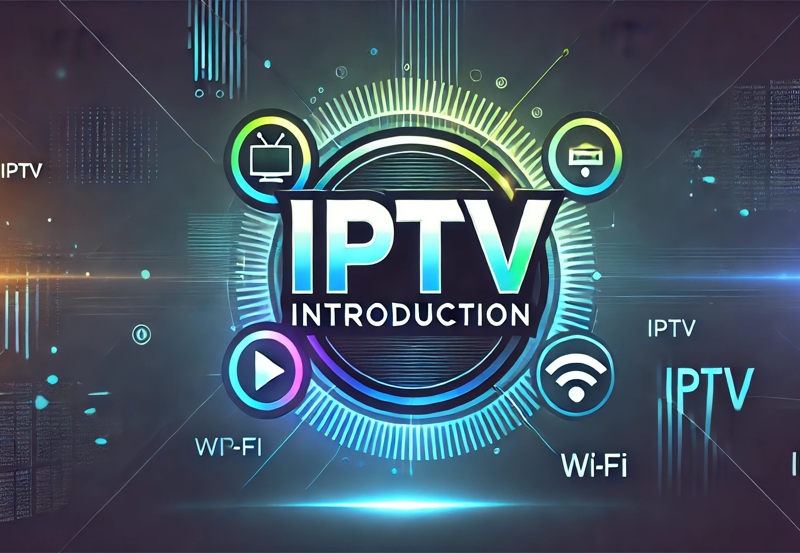In the ever-evolving landscape of digital entertainment, IPTV has emerged as a popular option for consuming content with flexibility and variety. Unlike traditional cable TV, IPTV—short for Internet Protocol Television—delivers programming through internet networks, offering users access to live TV streaming, video on demand, and a multitude of interactive features. This modern approach to TV has made “The Expert’s Guide to IPTV Enjoyment” an essential resource for anyone looking to fully exploit its capabilities.
Understanding IPTV: The Basics
Before diving into the equipment necessary for an unparalleled IPTV experience, it’s crucial to grasp what IPTV really entails. At its core, IPTV transforms the internet into a platform for distributing TV content, thus providing users with access to a broad array of channels ranging from live sports events to classic movies, all accessible through various devices including smart TVs, tablets, and smartphones. This integration into personal devices has paved the way for convenient and customizable viewing experiences.
IPTV services can be broadly categorized into three types: live TV, time-shifted media, and video on demand. Live TV streaming allows users to watch events in real-time, while time-shifted media lets users watch programs at their convenience. Last but certainly not least, video on demand offers an extensive library of shows and movies that can be accessed at any time.
The Rise of IPTV: Why It’s Becoming Indispensable
There’s no denying the increasing trend toward “cord-cutting,” where individuals ditch traditional cable subscriptions in favor of more customizable and often more affordable options like IPTV. Several factors have contributed to this shift, including the desire for versatile viewing habits, ease of use, and cost-effectiveness. Compared to cable, IPTV subscriptions usually come at a fraction of the price, making it a desirable choice for budget-conscious consumers.
Additionally, the global reach of IPTV services expands content choices beyond geographical limitations, allowing viewers to explore international channels and shows seamlessly. This access to diverse content appeals to users seeking to connect with global cultures and perspectives right from their living room.
Key Equipment for Optimal IPTV Streaming
Getting started with IPTV requires certain equipment tailored to your viewing preferences and technical needs. The cornerstone of an ideal IPTV setup involves acquiring a reliable IPTV set-top box, compatible devices like a Smart TV or computer, as well as robust networking equipment to ensure smooth content delivery.
IPTV Set-Top Box: The Heart of Your System
An IPTV set-top box serves as the central hub, decoding the streaming signals and rendering them on your display device. When selecting a set-top box, factors such as compatibility with your television, connection ports, and performance specifications like processor speed and memory capacity should take precedence.
Among popular brands, devices compatible with both standard and high-definition formats are typically recommended. Some offer advanced features such as voice control and app integrations that enhance user experience, though these typically come at a higher price point.
Top Set-Top Box Considerations
- Compatibility: Ensure the device supports the content formats you intend to use.
- Connection Options: HDMI ports and wireless connectivity options yield more flexible setups.
- Performance: Devices with faster processors and larger memory tend to handle high-resolution streams better.
Connection Devices: TV, Tablet, or Computer?
IPTV can be experienced across a variety of platforms, but each comes with its distinct advantages. Smart TVs are often preferred for their large screens and integrated apps that make it convenient to dive into viewing without additional devices. Tablets and computers offer mobility, allowing you to enjoy IPTV in any room as long as there’s a reliable internet connection.
When using a Smart TV, ensure it’s a model that supports relevant IPTV apps for smooth integration. Meanwhile, for computers and tablets, a simple web browser might suffice, although dedicated apps often offer a more streamlined interface and additional functionalities.
Maximizing the IPTV Experience on Roku
For enthusiasts eager to incorporate their Roku setup into their IPTV journey, understanding the nuances of IPTV on Roku is vital. Although Roku doesn’t natively support IPTV, workarounds exist in the form of downloadable apps that function similarly to built-in IPTV players.
Buy 1 Year IPTV and Enjoy Unlimited Content
Setting Up IPTV on Roku
Setting up IPTV on the Roku device involves downloading and setting up compatible third-party apps, a process that might require a bit of tech-savviness and patience. The installation usually begins by searching for the perfect IPTV app from Roku’s channel store. Popular apps often provide user-friendly interfaces and are continuously updated to support new features.
Once an app is chosen and installed, the next step involves inputting your IPTV provider’s details. This step ensures that the app can connect to your subscription and start fetching the content available to you.
Troubleshooting Common Roku Issues
- Connection Errors: Check your internet strength or restart your router and try again.
- Compatibility Issues: Verify the app supports Roku versions or consider alternative apps.
- Stream Lags: Optimize the network settings, or reduce active devices sharing the bandwidth to improve quality.
Ensuring a Reliable Internet Connection
A robust and stable internet connection stands as the backbone of any IPTV setup. High-speed broadband not only ensures uninterrupted streaming but also facilitates high-definition video quality—essential for an immersive viewing experience.
Choosing the Right Internet Plan
When it comes to IPTV, choosing the right internet plan can significantly impact performance. Subscriptions with speeds of at least 15 Mbps are typically recommended for standard definition streams, while high-definition and 4K content demand upwards of 25 Mbps. Moreover, unlimited data plans prevent encountering dreaded caps that could disrupt your binge-watching sessions.
Always consult with potential ISP providers regarding any additional fees specific to data usage, as these could affect long-term costs. Hardware considerations, such as modern routers that support high speeds and multiple simultaneous connections, further enhance viewing.
Boosting Network Signal
For those experiencing patchy signal coverage, strategic placement of the router can dramatically influence network performance. Routers should ideally be placed in central locations, away from obstructions. Deploying extenders helps eliminate coverage gaps, delivering consistent speeds throughout the home.
Advanced networking options include mesh Wi-Fi systems, which blanket the area with seamless coverage, particularly favorable in larger households or those having numerous connected devices.
Accessory Essentials: Enhancing Your Setup
As with any multimedia setup, certain accessories can transform a standard IPTV setup into a truly impressive entertainment hub. Items such as quality HDMI cables, audio enhancements, and ergonomic remote controls contribute significantly to the overall user experience.
Opt for Quality HDMI Cables
While often overlooked, using high-quality HDMI cables can make a substantial difference with regard to picture and sound quality. Look for cables with gold-plated connectors for superior signal transfer and long-term durability, which are crucial for maintaining seamless transmission without degradation.
Verify the cable’s certification for supporting 4K or HD content as their capability assures optimized performance for compatible TVs and set-top boxes.
Sound Matters: Audio Enhancements
A critical aspect of any viewing experience is sound, turning mere watching into impactful storytelling. Sound bars or home theater systems can significantly elevate the auditory experience far beyond what traditional TV speakers provide. Quality audio brings an immersive element that complements the visual aspects, enriching both music and text-heavy scenes.
Consider the room size, layout, and your usual viewing habits before selecting an audio system. Systems offering wireless connectivity add flexibility, allowing for strategic speaker placements without the clutter of excessive wiring.
Crafting the Perfect Atmosphere for IPTV Enjoyment
Creating the ideal atmosphere is crucial for immersive viewing. Optimal lighting, seating arrangements, and even temperature control can all have tangible effects on how content is perceived and enjoyed.
Lighting Ambiance
The right lighting can reduce eye strain during extended sessions. Adjustable lighting options like dimmable bulbs and smart lights give viewers control over their environment. Avoid bright lights directly facing the display to minimize glare and consider ambient backlighting to enhance contrast perception.
Many smart lighting systems can even sync with media being watched, adjusting hue and intensity to match onscreen action, thereby extending the viewing experience beyond the TV frame.
Ergonomic Seating Arrangements
Ergonomically sound seating ensures comfort during prolonged viewing and also promotes correct posture. Choose seating that supports both back and neck to avoid discomfort. Recliners, bean bags, or even adjustable standing tables provide options for diverse preferences, encouraging a comfortable and relaxed setting for a longer viewing experience.
Spacing the seating to be at an optimal distance from the screen further protects visual health by reducing unnecessary eye strain.
Frequently Asked Questions

What is the minimum internet speed for IPTV streaming?
For a standard definition stream, a speed of at least 15 Mbps is advisable. If you’re planning to enjoy high-definition or 4K content, opt for at least 25 Mbps to avoid buffering or quality issues.
Can I use any set-top box for IPTV?
Not all set-top boxes are compatible with IPTV services. Ensure the device supports the content formats your IPTV provider offers and includes necessary connection ports like HDMI for setup.
Is it possible to watch IPTV on non-smart TVs?
Yes, IPTV can be accessed on non-smart TVs too. This typically involves using an IPTV set-top box connected to the TV via an HDMI cable or another compatible connection method.
How do I watch IPTV on Roku?
Although Roku doesn’t natively support IPTV, you can use compatible third-party apps. Start by downloading an IPTV app from Roku’s store, then set it up with your IPTV provider’s details to enjoy content.
What should I consider when selecting an IPTV provider?
Research providers based on the range of services offered, existing user reviews, flexibility of subscriptions, and customer support quality. Ensure compatibility with your choice of equipment and that the provider meets your content preferences.
How can I boost my network signal for better streaming?
Position your router centrally in the house and away from obstructions. Use signal boosters or mesh networks to cover larger areas and minimize connectivity issues, ensuring consistent streaming quality.





